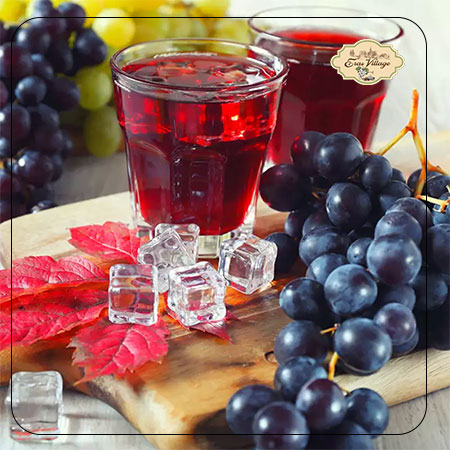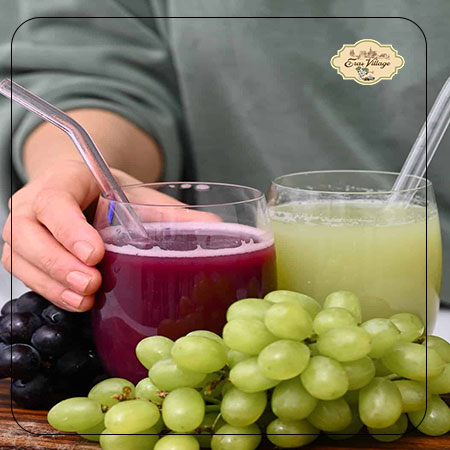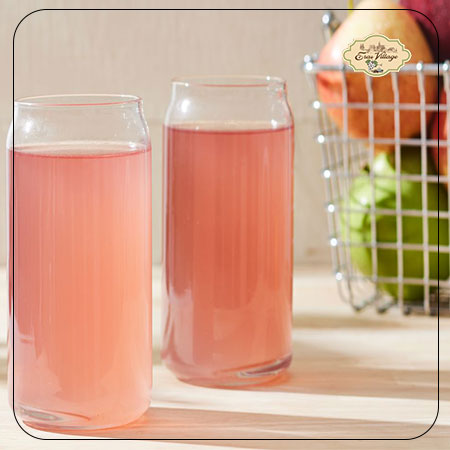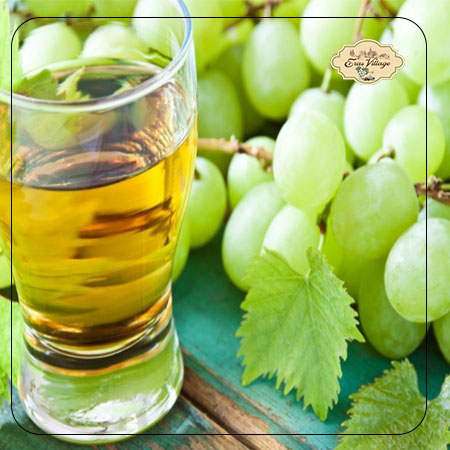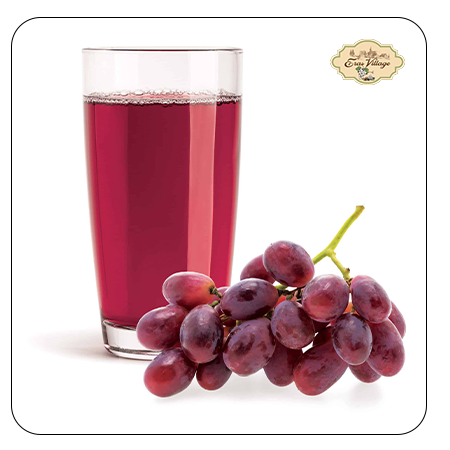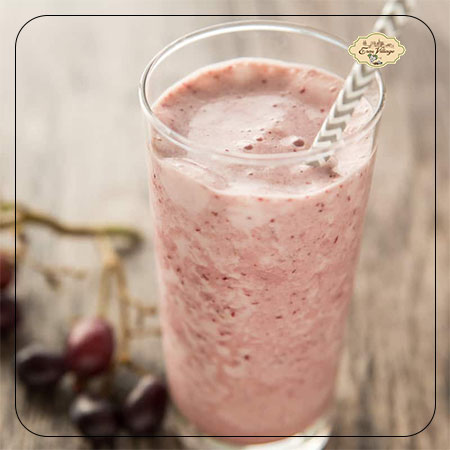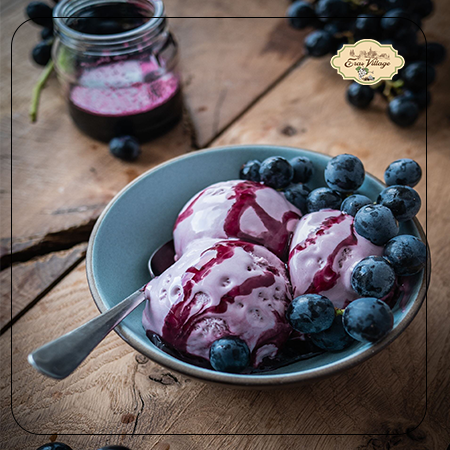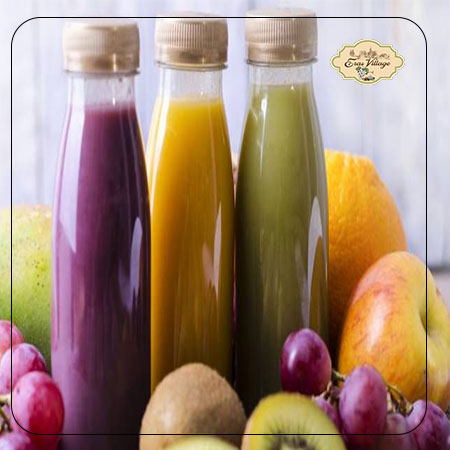
Can you concentrate fruit juice by boiling?
September 30, 2024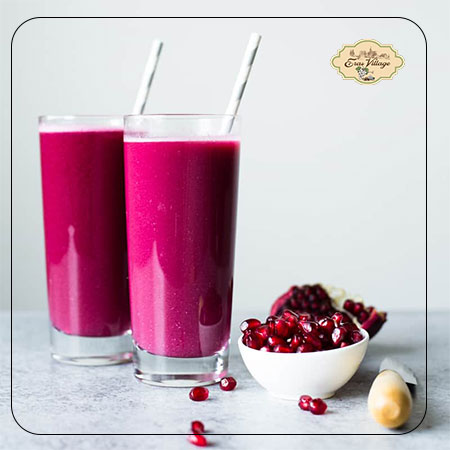
Pomegranate concentrate recipe
October 7, 2024Grape concentrate recipe
Do you love the sweet and juicy taste of grapes? But do you get sad when grape season is over? Don’t worry! By making grape concentrate at home, you can enjoy the taste and flavor of this heavenly fruit in your drinks, desserts, and dishes all year round.
In this article, we will introduce you to the simple steps of making grape concentrate at home. With this easy method, you can make the most of your fresh and high-quality grapes and enjoy their benefits and amazing taste in any season.
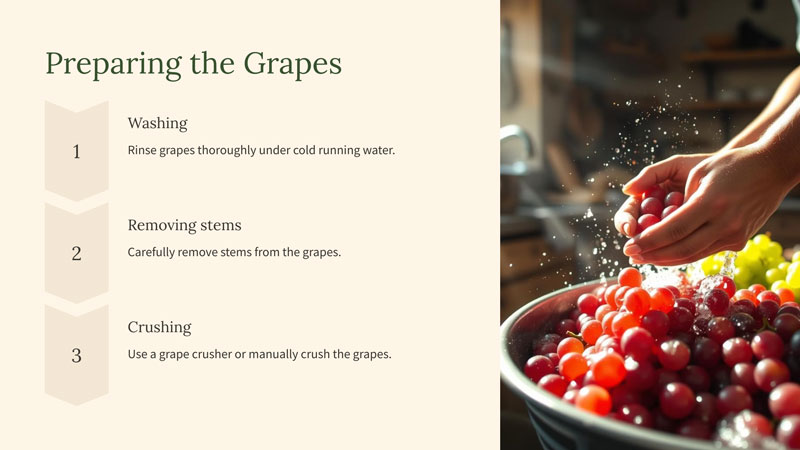
Grape concentrate recipe
Here’s a recipe for making grape concentrate at home:
Ingredients:
4-5 pounds (approximately 14 cups) fresh grapes (red or white, depending on your preference)
2 cups water (optional, depending on grape variety)
1 1/2 cups sugar (optional, can be adjusted to taste)
Equipment:
Large stockpot
Food mill or cheesecloth
Large jars for canning (optional, for long-term storage)
Canning equipment (optional, for long-term storage)
Instructions:
Wash and prepare the grapes: Wash the grapes thoroughly and remove any stems.
Extract the juice:
Option 1 (with water): Place the grapes in a large stockpot with 1-2 cups of water (depending on the juiciness of your grapes). Bring to a boil, then reduce heat and simmer for 20-30 minutes, or until the grapes soften and burst open.
Option 2 (without water): For a more concentrated flavor, you can skip the water and simply heat the grapes on medium heat, breaking them up with a potato masher occasionally, until they release their juice. This may take slightly longer.
Strain the juice: Pour the cooked grapes into a food mill or cheesecloth strainer placed over a large bowl. Press the grapes firmly to extract as much juice as possible. Discard the pulp.
Simmer and thicken the juice (optional): If you prefer a thicker concentrate, you can simmer the extracted juice over medium heat for another 30-45 minutes, or until it reduces by half.
Sweeten to taste (optional): Taste the juice and add sugar if desired. Start with 1/2 cup and gradually add more to your preference. Remember, the concentrate will be diluted later with water, so you can keep it a bit tart.
Cool and store: Let the concentrate cool completely. You can store it in the refrigerator for up to a week in an airtight container.
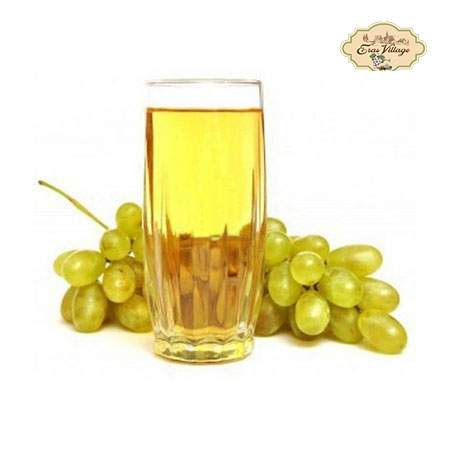
Tips for the Best Old Fashioned Grape Juice Recipe
Here are some tips for the best old-fashioned grape juice recipe:
Choosing the right grapes:
Variety: Concord grapes are a classic choice for homemade grape juice due to their deep flavor and high juice content. However, feel free to experiment with other varieties like Niagara (white), Isabella (red), or a blend for a unique taste.
Ripeness: Use ripe grapes for the most concentrated flavor and sweetness. Look for plump, firm grapes with a deep, even color. Avoid grapes that are soft, mushy, or have blemishes.
Extraction methods:
Traditional Method: Simmering the grapes in a pot with a little water helps to soften them and release their juices. This method works well for all grape varieties and adds a slightly cooked flavor.
No-Cook Method: For a more vibrant, fresh flavor, try crushing the grapes with a potato masher or food processor before straining. This method works best with juicier varieties like Concord grapes.
Straining:
Food Mill: A food mill is an efficient way to separate the juice from the skins and seeds. It provides a smoother texture with minimal pulp.
Cheesecloth: This is a traditional method and allows some pulp to remain in the juice for a more rustic texture. Use several layers of cheesecloth to ensure a good separation.
Sweetening:
Taste before adding sugar: Ripe grapes can be naturally sweet, so taste the juice before adding sugar. You can always adjust sweetness later.
Natural sweeteners: Consider alternatives like honey or maple syrup for a more natural sweetness profile.
Flavor Boosters:
Lemon or orange peels: Adding a touch of citrus zest during the simmering process can add a refreshing brightness to the juice.
Spices: For a unique twist, experiment with a pinch of cinnamon, nutmeg, or cloves while simmering the grapes.
Storage:
Short-term storage: Freshly made grape juice can be refrigerated in an airtight container for up to a week.
Long-term storage: If you want to enjoy your juice throughout the year, consider canning it in sterilized jars. This process requires following safe canning practices to ensure proper storage.
Bonus Tip: Let the juice age for a few days before enjoying. This allows the flavors to develop and mellow for a richer taste.
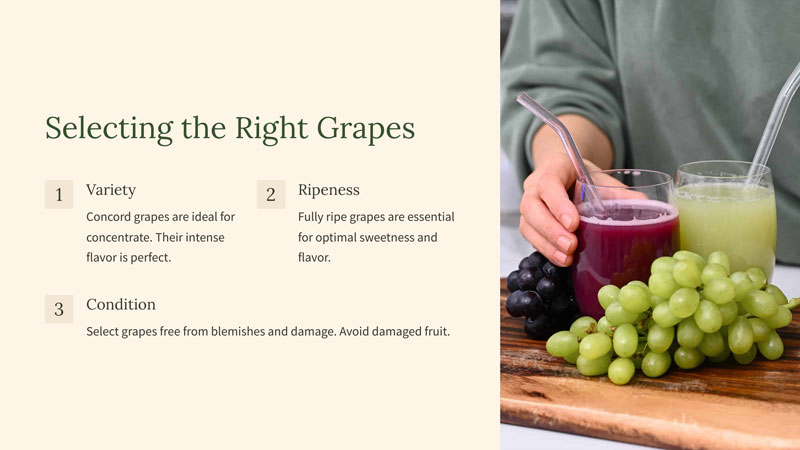
Characteristics of a good grape concentrate
A high-quality grape concentrate should possess several characteristics that indicate its purity, concentration, flavor, and overall quality. Here are some key aspects to look for:
1. Brix Level:
Brix is a measure of the sugar content in a liquid. A good grape concentrate should have a Brix level of 66 degrees or higher. This indicates a high concentration of grape juice and a strong, natural sweetness.
2. Appearance:
The concentrate should have a clear, vibrant color, ranging from deep red for red grape concentrate to light amber for white grape concentrate. It should be free of any cloudiness, sediment, or foreign particles.
3. Flavor:
A high-quality grape concentrate should have a rich, intense grape flavor without any off-flavors or bitterness. It should taste like the essence of fresh grapes, with a balance of sweetness and tartness.
4. Absence of Added Ingredients:
Pure grape concentrate should not contain any added sugars, artificial sweeteners, or artificial flavors. The sweetness should come solely from the natural sugars of the grapes.
5. Minimal Processing:
The concentrate should be produced using minimal processing methods to preserve the natural flavor, nutrients, and color of the grapes. Excessive processing can lead to a loss of quality and flavor.
6. Source and Quality of Grapes:
The quality of the grapes used in the concentrate is crucial. The grapes should be fresh, ripe, and free from defects. High-quality concentrate is often made from premium grape varieties known for their flavor and juice content.
7. Packaging and Storage:
The concentrate should be packaged in airtight containers to prevent oxidation and contamination. It should be stored in a cool, dark place, such as a pantry or refrigerator, to maintain its quality.
8. Reputation of the Producer:
Choosing a reputable producer with a history of making high-quality grape concentrate is important. Look for brands that have positive reviews and are known for using premium ingredients and sustainable practices.
By considering these characteristics, you can select a grape concentrate that offers a rich, authentic grape flavor, free from artificial additives and preservatives, and made with care from high-quality grapes.
Where to buy best grape concentrate?
If you are also looking to buy white and red grape concentrate in bulk, you can place your order through the ErasVill in the shortest possible time.
FAQ
What is the best type of grape for making concentrate?
Grapes with high sugar content, such as Ruby grapes, Askari grapes, and Shahani grapes, are more suitable for making concentrate due to their high sugar levels.
What is the most crucial step in grape concentrate production?
The most critical step is the evaporation of water from the grape juice. In this stage, the water in the juice evaporates, concentrating the solids like sugar, acids, and pigments.

